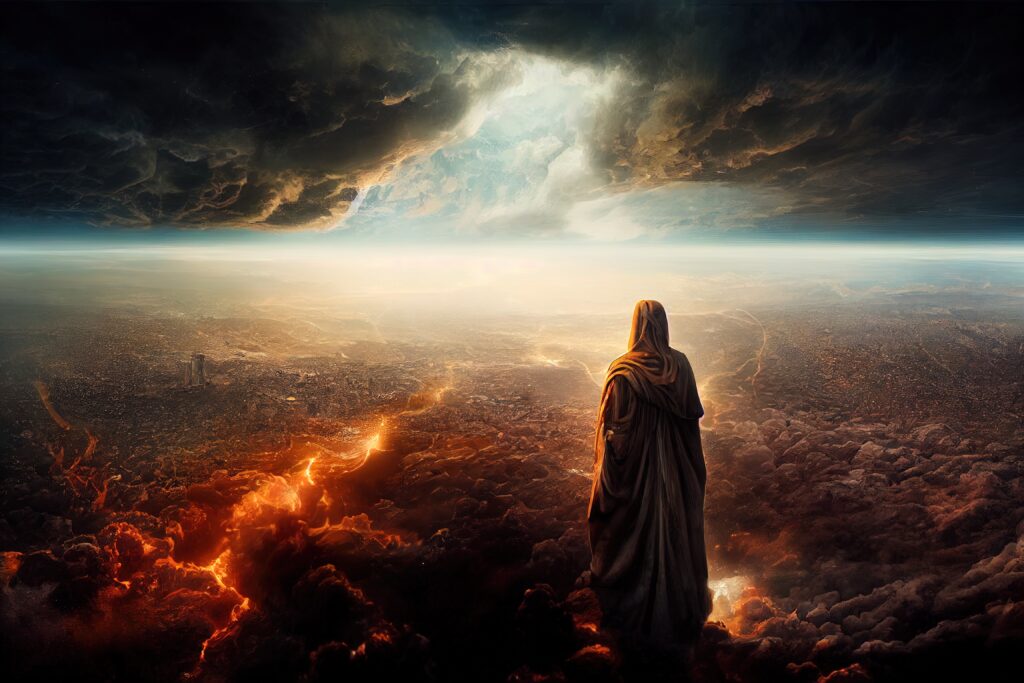
The First Thing John Describes.
“The wall of the city was built on foundation stones inlaid with twelve precious stones… The twelve gates were made of pearls—each gate from a single pearl! And the main street was pure gold, as clear as glass… I saw no temple in it, for the Lord God the Almighty and the Lamb are its temple. And the city has no need of the sun or of the moon to shine on it, for the glory of God has illuminated it, and its lamp is the Lamb.” – Revelation 21:22-23. (NASB) Revelation 21:19-23.
The walls must have been magnificent because it was the first thing John describes.
Jesus said that He was going to prepare this place for His people (John 14:1-3). These stones in the city’s foundation are the same as those on the breastplate of Israel’s High Priest. (Remember Rev.1) Here, as so often in this book, the vision ties together the whole of God’s revelation. In Revelation all the books of the Bible meet and end. It is like the finale of the biblical symphony.
The vision of the new Jerusalem is grounded in the rest of the Bible. The waters flowing from the throne (Rev22:1) and the tree of life (22:2) recall the garden of Eden. The radiance of the city and its cubical shape (21:11,16) recall the sanctuary and Solomon’s temple (Exod.40:34,35; 1Kings 6:20; 1 Kings 8:11). There are only 2 cubes mentioned in the Bible: The Most Holy Place in the sanctuary and the New Jerusalem. Many parts of the design of the city also recall Ezekial’s visionary temple (Ezek.40-48). Also, many of the details of the New Jerusalem recall the promises to overcomers in the 7-churches portion of Revelation (e.g.the tree of life 2:7; 22:2). The description of the city makes abundant use of the number 12 – the kingdom number. So, the vision of the New Jerusalem has precursors in the history of God’s leading throughout the Bible.
The Most Holy place and its relationship to the imagery of the New Jerusalem are related to an important word mentioned in Rev 21:3; the word “Tabernacle” (RSV, KJV) (Greek skene), which is translated by the NLT as “live with them.” Other versions use the word “dwell.” The Old Testament stated that one of the purposes or lessons of the sanctuary (there are many lessons) is that God would dwell or live with His people (Exod.25:8). How significant that the same word is used by John concerning Jesus’ incarnation (John 1:14.) God dwelt with his people in the sanctuary of the Old Testament. Jesus dwelt with His people in the New Testament. Finally, God will again dwell / tabernacle with His people in the Earth Made new. Just like the sanctuary of old, all references involve a filling of the Temple with the Shekinah Glory.
The cube structure of the New Jerusalem is a strong allusion to the Most Holy Place.
What will it be like when we meet Jesus (the Lamb) in the Holy City? What thoughts will run through our minds? What will we feel? I suspect if we have a true picture of what He went through for us that we will feel a deep well of gratitude that will swell more and more throughout eternity. We can only begin to feel it now, but we can at least make a start.
When the Bible speaks of light in the context of God, it uses the word “glory.” The very last reference in the Bible to the glory of God is found in our text for today. The term “glory” has a number of meanings in the Bible. But when we narrow the focus to manifestations of God, glory designates something quite different than “beauty, ornament, pride, or boasting.”
In the Lord’s Prayer Jesus says, “Yours is the glory” (Matt 6:13). Glory is not an accidental feature of God’s character, but an essential quality. But this glory is much more than just a radiant brightness. In Exod.34:6-7 the glory of God is defined as His character. God is “slow to anger, abounding in love and faithfulness, maintaining love to thousands, and forgiving wickedness, rebellion, and sin. Yet he does not leave the guilty unpunished. . .”
The glory of God expresses the fullness of His character, including both justice and mercy. That character was clearly manifest in the words and the actions of Jesus (John 17:1-5). As we have reflected our way through Revelation, we have beheld His glory!
In practical terms, the place where we see the glory of God today is in His Word. It is the Bible that opens up the character of God to us in Jesus Christ. We may be distracted by other claims to glory, but the true glory is found in Jesus Christ through His Word. In the Word, God allows us to experience His glory, a foretaste of our experience in the New Jerusalem. There, what we have taken hold of here by faith, will be visible to our sight.
